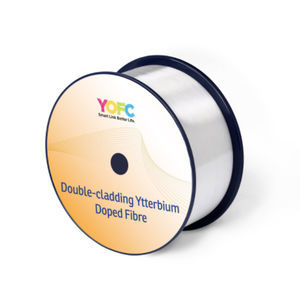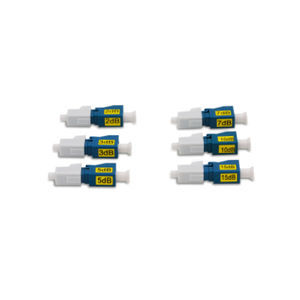
- Electricity - Electronics
- Cable, Connector, Enclosure
- Audio/video optical cable
- Yangtze Optical Fibre and Cable Joint Stock Limited Company
Optical data cable DTS-MMFpoweraudio/videodistribution




Add to favorites
Compare this product
Characteristics
- Type
- data, power, audio/video
- Applications
- distribution
- Norms
- IEC
- Other characteristics
- multimode
- Temperature
Min.: -40 °C
(-40 °F)Max.: 85 °C
(185 °F)
Description
The distributed temperature system-multimode fibre (DTS-MMF), adopts advanced plasma chemical vapor deposition (PCVD) process which can insure precise waveguide design and smooth graded index profile. Because of the above process advantages and optimized preform parameter, the fibre has excellent optical and geometric properties at long wavelength (1300nm, 1550nm). Additionally, the fibre can resist high temperature by using speical coating material.
Distributed temperature system
Low attenuation at DTS operating wavelength 1450nm, 1550nm and 1650 nm
High bandwidth at C-band (especially at 1550nm)
High temperature resistance
Low splicing loss
Excellent bending insensitivity
1. Low attenuation at DTS operating wavelength
The lower attenuation of the DTS-MMF at the wavelength of 1450nm, 1550nm and 1650nm can increase the distance of the distributed temperature measurement system
2. High bandwidth at 1550nm
According to IEC 60793-1-41-2010 (bandwidth), the actual measured bandwidth at 1550nm of DTS-MMF can exceed more than 1000MHz·km, which effectively improves the spatial resolution of the long-distance distributed temperature measurement system
Catalogs
No catalogs are available for this product.
See all of Yangtze Optical Fibre and Cable Joint Stock Limited Company‘s catalogsOther Yangtze Optical Fibre and Cable Joint Stock Limited Company products
Specialty Fibre
Related Searches
- Electrical connector
- Electrical cable
- Data electrical connector
- Rectangular box
- Copper cable
- Copper electrical cable
- Power cable
- Plastic box
- Insulated cable
- Wall-mounted enclosure
- Multi-strand cable
- Insulated electrical cable
- Terminal box
- Optical cable
- Flexible cable
- Wall-mounted terminal box
- Industrial cable
- Protection box
- Optical data cable
- Flame-retardant cable
*Prices are pre-tax. They exclude delivery charges and customs duties and do not include additional charges for installation or activation options. Prices are indicative only and may vary by country, with changes to the cost of raw materials and exchange rates.





















































